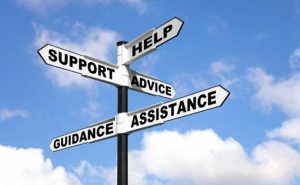Cocaine Cravings
One thing that most people who are withdrawing will experience are cocaine cravings. This is a strong desire to take more cocaine. Part of cocaine cravings is driven by the desire to reduce symptoms of withdrawal and re-experience the high of the drug.
People may also experience mood changes. Users in withdrawal may feel depressed, anxious, or irritable. This is known as a dysphoric mood or depression, which is common in cocaine withdrawal. This is almost the opposite of the euphoria of taking cocaine. These feelings usually pass once withdrawal is over.
Fatigue is also common and a normal part of withdrawal. The user will feel exhausted, which is a natural low after exhilaration produced by using cocaine. This can also be due to using cocaine over time and not sleeping properly as a side effect. This can lead to sleep issues. One common frustration is the difficulty of actually sleeping when in withdrawal. Despite being exhausted the person in withdrawal may struggle to sleep due to insomnia, vivid dreams, and horrific nightmares. On the other hand, some may have hypersomnia and sleep far too much.
Many will also demonstrate an increased appetite. This may be increased because those using cocaine do not often eat appropriately. During withdrawal it is important to eat a healthy diet to rebuild the nutrients lost while using. It is also necessary to manage portions so the body does not react negatively.
Cocaine Withdrawal
The initial crash that comes with cocaine withdrawal can vary in intensity and may last from hours to days. Though for some heavy users, symptoms can last for weeks or months. This long-lasting withdrawal is known as post-acute withdrawal syndrome (PAWS).
Though everyone will experience cocaine withdrawal differently. There are some common features which will be outlined. One way that cocaine withdrawal can be better understood is taking out a loan for something you love (using cocaine). But the debt will come up due at some point (withdrawal). The debt is typically paid off at a much higher rate so you have to decide if the payoff is worth the loan. In the case of cocaine, this payback is much too high. Feeling worse after coming down off of cocaine is a rebound effect and is the way the body maintains homeostasis. Fortunately, the effects of withdrawal are not permanent, intense, but not lasting forever. You can feel normal again.
Cocaine Addiction
Cocaine is one of those drugs that may seem non-addictive to some the first few times they use it in small doses. These people may not be concerned over withdrawal symptoms because they are only using occasionally or in small amounts. Some may even be able to only use on the weekends for a time. But cocaine addiction is ultimately impossible to control. Over time and with repeated use the user builds up a tolerance or a need to use more and more to achieve the same feeling as with the first use. With tolerance and increased use, a person may become dependent. Once dependence starts then if you stop using, withdrawal symptoms will occur. People who use cocaine have a disease, they are not defective in any way. These individuals need support and professional help.
Whether you have become dependent and want to know what to expect or are fully addicted and dread the withdrawal period, there is help available. First, we will explore what withdrawal from cocaine may look like, then explore how and where to get help.
Physical Effects of Cocaine Cravings and Withdrawal
Those in withdrawal often show a physical slowing or agitation. The slowing is called psychomotor retardation and will go away with time. However, some experience agitation and move faster or are unable to sit still or focus on anything for a length of time. The individual may also have chills, tremors, muscle aches, and nerve pain, especially in the early days.
What to Do
If you are experiencing withdrawal symptoms such as cocaine cravings then seek medical attention immediately. If the addiction was strong there is a chance that you will spend a few days in the hospital detoxing. This may require intravenous fluids and medical tests to make sure no permanent damage has been done through drug use.
Getting Help

Cocaine addiction is scary. As is cocaine cravings from withdrawal for those who have to suffer through it. This is especially true for those who used cocaine mixed with other drugs or used multiple drugs and alcohol at the same time. When you are ready for the help you deserve, give DARA great consideration.
DARA is an in-patient facility that offers four, six, and twelve week stays to accommodate your personal needs. Created to mimic a luxury resort in many ways, DARA is effective, yet discreet program that caters to those who need to start on the road to recovery without the intrusion of their business being broadcast to the world. Luckily, DARA centers exist in many countries and are highly affordable for nearly everyone.
DARA created an evidence-based program that combined cognitive behavioral therapy with the mind-body connection to allow patients to improve mentally, physically, and spiritually through the use of personal trainers, highly trained therapists, and well-organized support staff. Enjoy daily physical activities like a workout in the gym, yoga, or swimming, nutritious meals created by a staff chef, and group and individual therapy sessions. Through each of these activities you will improve in health and overall well-being to get a good start on your road to recovery. CBT is a supported for of therapy that helps people understand the link between thoughts, emotions, and actions. If you can change any part of this cycle then your behaviors can be changed as well. This has been found useful for not only addiction, but anxiety, depression, phobias, eating disorders, and much more.
Call Now
Take the first steps to improving your life by giving DARA a call. You are worth making the effort to get help. DARA can offer just what you need, but you have to take that step.
CLICK HERE to get a Free Confidential Addiction Rehabilitation Assessment. Alternatively, you can click on the live chat icon to chat with someone right now.


















